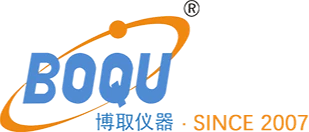Expert in Water Quality Measurement and Water Treatment Project Since 2007
Using Dissolved Oxygen Sensors in the Laboratory: Research Insights
Using Dissolved Oxygen Sensors in the Laboratory: Research Insights
Introduction to Dissolved Oxygen Sensors
Dissolved oxygen (DO) refers to the amount of oxygen present in a liquid, usually expressed as a concentration in milligrams per liter (mg/L) or as a percentage of the saturation level. Dissolved oxygen plays a crucial role in various scientific and industrial applications, particularly in the field of environmental monitoring and water quality assessment. In laboratory settings, researchers often rely on dissolved oxygen sensors to measure and analyze the oxygen levels in different samples. This article explores the principles behind dissolving oxygen sensors and highlights their significance in laboratory research.
Working Principles of Dissolved Oxygen Sensors
Dissolved oxygen sensors typically employ electrochemical or optical techniques to measure oxygen levels. The electrochemical sensors use a two-electrode system with a cathode and an anode. As oxygen diffuses through a semi-permeable membrane, it interacts with the electrolyte inside the sensor, causing a current proportional to the oxygen concentration. In contrast, optical sensors operate based on the principle of fluorescence quenching. They utilize a light source and measure the changes in fluorescence emitted by a specialized dye when exposed to oxygen. Both types of sensors have their advantages and are suitable for different laboratory applications.
Calibration and Maintenance of Dissolved Oxygen Sensors
To ensure accurate and reliable measurements, it is essential to calibrate and maintain dissolved oxygen sensors regularly. Calibration involves exposing the sensors to known oxygen concentrations and adjusting their output accordingly. Manufacturers provide calibration standards or solutions for this purpose. Routine maintenance includes cleaning the sensor, inspecting the membrane for any damage or fouling, and replacing any worn-out parts. Proper storage and handling also contribute to sensor longevity and optimal performance. Neglecting calibration and maintenance can result in erroneous data and affect the integrity of research findings.
Applications of Dissolved Oxygen Sensors in Laboratory Research
Dissolved oxygen sensors find applications in a wide range of laboratory research fields. In environmental sciences, they are used to monitor oxygen levels in natural water bodies, such as rivers, lakes, and oceans, to assess the health and quality of aquatic ecosystems. In microbiology studies, dissolved oxygen sensors help in understanding the oxygen requirements of microorganisms, facilitating the development of optimal growth conditions. Furthermore, researchers in biochemistry and biotechnology employ these sensors to monitor and control dissolved oxygen levels in bioreactors and fermenters, ensuring optimal conditions for cell growth and product yield.
Advances in Dissolved Oxygen Sensor Technology
Over the years, dissolved oxygen sensor technology has witnessed significant advancements, leading to improved accuracy, precision, and reliability. One notable development is the integration of wireless and smart sensor capabilities. Wireless sensors eliminate the need for cumbersome wiring, enabling ease of use and remote monitoring. Smart sensors offer enhanced data acquisition and processing capabilities, providing researchers with real-time information and data analysis features. These technological advancements have revolutionized laboratory research, allowing for more efficient and streamlined data collection and analysis.
In conclusion, dissolved oxygen sensors are invaluable tools in laboratory research, enabling scientists to measure and analyze oxygen levels in various samples accurately. The working principles, calibration, and maintenance of these sensors are critical for obtaining reliable data. Furthermore, their applications span across multiple scientific disciplines, from environmental sciences to microbiology and biotechnology. With ongoing technological advancements, we can expect further improvements in dissolved oxygen sensor technology, facilitating even more sophisticated and insightful laboratory research.
Contact Us
Office Add:No. 118 Xiuyan Road,Pudong New Area,Shanghai,Zip Code:201315,China
Contact us right away
BOQU Instrument focus on development and production of water quality analyzers and sensors, including water quality meter, dissolved oxygen meter, pH sensors, etc.
